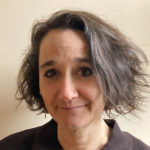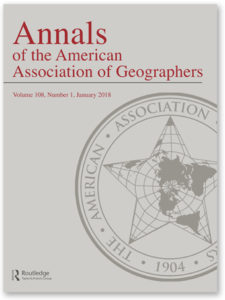Building Vibrant Departmental Cultures, Part One


A familiar story with an unfamiliar ending
The Geography Department at Indiana University Bloomington was nearly dissolved in the early 2010s. Neither enrollments nor research productivity were an issue. Instead, we were almost taken down by personal distrust and conflict, and by intellectual disagreements between physical and human geographers.
Thus far, this story is likely familiar: many of the departments that closed over the last few decades were plagued by similar cultural and intellectual issues. What’s different is the next part of the story: a decade later, IU Geography is a cohesive, thriving department. We have built a culture that values and respects a broad range of geographic scholarship, and works to support students, staff and faculty professionally and personally. Our reputation on campus as a collegial, highly functional department has given us credibility and administrative goodwill, and drawn FTE (Full-Time Equivalent) transfers from less collegial departments.
There are many paths to this outcome, but in this and two upcoming columns, I want to share a few things that were most effective for us, in hopes one or more of them might be useful for you:
- Re-organizing to avoid traditional divides among physical/human-environment/human geography;
- Building a culture of respect and care for students, staff and faculty; and
- Creating more horizontal and transparent policies and administrative structures.
Organizing around problem areas rather than traditional geographic divides
With just seven faculty members remaining when the dust settled in 2012, we had a choice about how to move forward: either to specialize in a way that capitalized on the strength of some faculty but would force others out of the department, or to build an interdisciplinary vision that capitalized on all of our strengths. Happily, we chose the latter option.
Our goal was to make the interdisciplinary character of geography a strength rather than a source of conflict. We wanted there be clear intellectual benefits for our hydrologist to have a political ecologist of water in the department, and vice versa. To do that, we abandoned the classic physical/human-environment/human geography divide and instead arranged ourselves by problem areas: cities, development and justice; climate and environmental change; food and agriculture; and water resources (we also have a methods-focused cluster in GIS/RS). In each area, the goal was to include a range of courses and faculty that spanned physical, human-environment, and human geography.
Long-term payoff
No one here at IU Geography would argue that the process of overcoming traditional disciplinary divides is complete. In some areas (e.g., climate and environmental change) we were able to achieve our interdisciplinary vision immediately. In other areas (e.g., cities, development and justice) it took until this year to have the full range of faculty. But we have succeeded in building ties that bridge physical/human-environment/human divides via grant proposals, courses, and interdisciplinary committees for graduate students. Our undergraduates now draw connections between our classes that we had never considered ourselves.
While we still keep an eye on the balance of faculty across the traditional physical/human-environment/human divide, organizing by topic drops the tension level in hiring decisions and graduate admissions. The topic structure is also far more legible to undergraduates, who may care a lot about food and agriculture but have no investment whatsoever in the divide between physical and human geography.
As a long-term champion of integrating critical biophysical and social research, I will close by noting that IU Geography’s topical organization brings our departmental structure in line with the world around us. If you believe in the core claim of the Anthropocene that our world is now inextricably eco-social, then our intellectual structures should be, too.
DOI: 10.14433/2017.0141
Please note: The ideas expressed in the AAG President’s column are not necessarily the views of the AAG as a whole. This column is traditionally a space in which the president may talk about their views or focus during their tenure as president of AAG, or spotlight their areas of professional work. Please feel free to email the president directly at rlave [at] indiana [at] edu to enable a constructive discussion.

